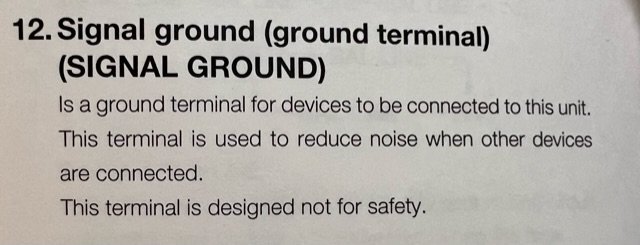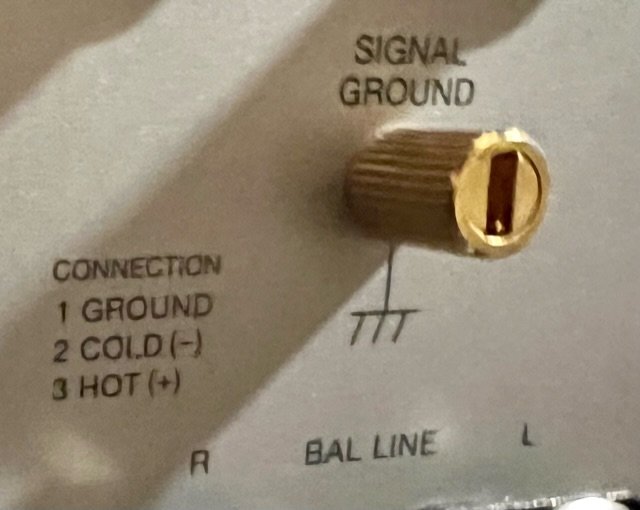My understanding of the decision tree for determining which connection points to use on one's components gathered from reading Shunyata's literature, watching their videos and viewing the excellent Suncoast interview video with Caelin Gabriel, is as follows:
1. If the internal signal ground plane(s) are tied to the chassis ground of the component, determined by a very low or zero ohms reading by multimeter between the ground pin of the component's IEC power inlet and the negative or shell portion of an unused RCA jack, pin 1 of an XLR jack, shell of a BNC chassis connector, etc :
a. Use the component's chassis ground screw or binding post, if provided, to connect a ground lead to one of an Altaira devices ground terminals.
b. Use an existing chassis bolt or screw near the audio device's power inlet if a chassis ground screw or binding post is not provided *and* the chassis bolt or screw can be backed out enough to capture a spade lug *and* the chassis screw or bolt is not being used to fasten something internally to the audio device's chassis.
c. Use one of the chassis mounted inputs (RCA, XLR, BNC, USB, ethernet, etc) identified in step 1. above to connect a ground lead to one of the Altaira's ground terminals.
2. If chassis ground and internal signal grounds are *not* tied together, utilize a chassis connection point (binding post, chassis bolt or screw) to ground the chassis. Use one of the chassis mounted input connectors (RCA, XLR, BNC, USB, ethernet, etc) to connect the signal ground plane to the Altaira.
If, as Nils is hearing, utilizing a component's chassis ground point *and* one or more signal input ground points gives further improvements, my supposition is that either the chassis ground and one or more internal signal ground planes are either not tied together internally or if they are, the internal interconnection between chassis ground and signal plane ground is higher impedance than a direct path from signal ground via one of the Shunyata specialized connectors to Altaira.
In the case of the Extreme, perhaps Emile
@Taiko Audio can inform us about the chassis ground and signal ground planes for the I/O cards accessible from the back of the Extreme.
As to which Altaira to use, and what kind of grounds (signal or chassis) or components (analog or digital, or mixed) I have to admit I'm still somewhat confused, even after going back and re-reading Shunyata's literature and viewing all the videos, reading the reviews and so forth. Some clarification there would definitely be in order.
Luckily, I don't have to stress on that -- Shunyata's Richard Rogers is a neighbor and even nicer guy in person than the already nice person shown in the TAS video. So when the time comes for me to try out Altaira in my own system I'll have him as an expert resource to depend on.
Steve Z















